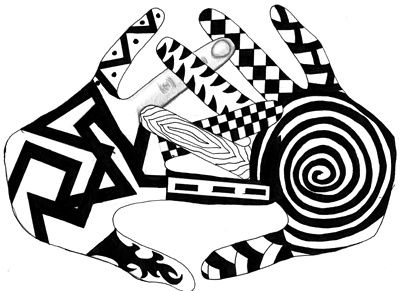All Nonfiction
- Bullying
- Books
- Academic
- Author Interviews
- Celebrity interviews
- College Articles
- College Essays
- Educator of the Year
- Heroes
- Interviews
- Memoir
- Personal Experience
- Sports
- Travel & Culture
All Opinions
- Bullying
- Current Events / Politics
- Discrimination
- Drugs / Alcohol / Smoking
- Entertainment / Celebrities
- Environment
- Love / Relationships
- Movies / Music / TV
- Pop Culture / Trends
- School / College
- Social Issues / Civics
- Spirituality / Religion
- Sports / Hobbies
All Hot Topics
- Bullying
- Community Service
- Environment
- Health
- Letters to the Editor
- Pride & Prejudice
- What Matters
- Back
Summer Guide
- Program Links
- Program Reviews
- Back
College Guide
- College Links
- College Reviews
- College Essays
- College Articles
- Back
RTCs of USA!
Some say treatment is a gift.
I call it a blessing.
Every day, thousands of teenagers and young adults struggle and battle against many behavioral and emotional disorders. Some of these issues include eating disorders, self-harm, suicidal tendencies, anxiety, hallucinations, anger management issues, and emotional regulation struggles. While some of these people still fight against the tough stuff, others have found an effective solution; residential treatment centers.
A residential treatment center is an alternative living arrangement for people struggling with behavioral disorders. An RTC uses therapy and behavior-modification to help their patients.
RTCs are not cheap. Most of them can be taxing both economically and emotionally. But the long-term and emotional benefits of residential treatment centers have outweighed the costs, and nowadays, many people turn to these safe havens for help.
In the 1980s, a type of therapeutic method called Cognitive Behavior Therapy was introduced into the mental health community. This practice worked well with children and teenagers, focusing mostly on the thought process and cognitive thinking distortions that occurred within the patient’s mind. Cognitive Behavior Therapy-oriented treatment centers began to open up in more places. There are plenty of studies that show the great progress CBT has instilled in people today.
Residential treatment centers usually use a behavior-modification paradigm to help redirect their patient’s negative behavior patterns in a more positive direction. There are lockdown facilities; but don’t be fooled by the intimidating name. A lockdown is a treatment center in which the patients are not allowed to leave the premises. Lockdowns are usually best for people struggling with more dangerous or hazardous situations, such as running away, aggressive behavior, or extreme suicidal tendencies. Still, lockdowns provide patients with care and compassion so they can receive the help they need.
There are lots of therapeutic settings implemented in RTCs. These may include equine or animal therapy, individual and family therapy, recreation activity therapy, art therapy, and group therapy. While being surrounded by support and therapy, patients can feel safe and confident.
In most cases, there are staff members on shift 24/7 in a center to ensure patient and staff safety. I am a former RTC patient who attended a center that had morning staff, evening staff, and then a nighttime or “Graveyard” staff. The staff members provide support, discipline, friendship, and instruction to the students/patients.
Although there is some controversy regarding treatment centers, most studies have shown RTCs to be an effective and helpful solution to help people overcome struggles and tough issues in their lives. Residential treatment centers are a blessing to many families with struggling teens. The centers are flourishing in the United States. Currently, there are 1,591 facilities in America and counting.

Similar Articles
JOIN THE DISCUSSION
This article has 0 comments.
